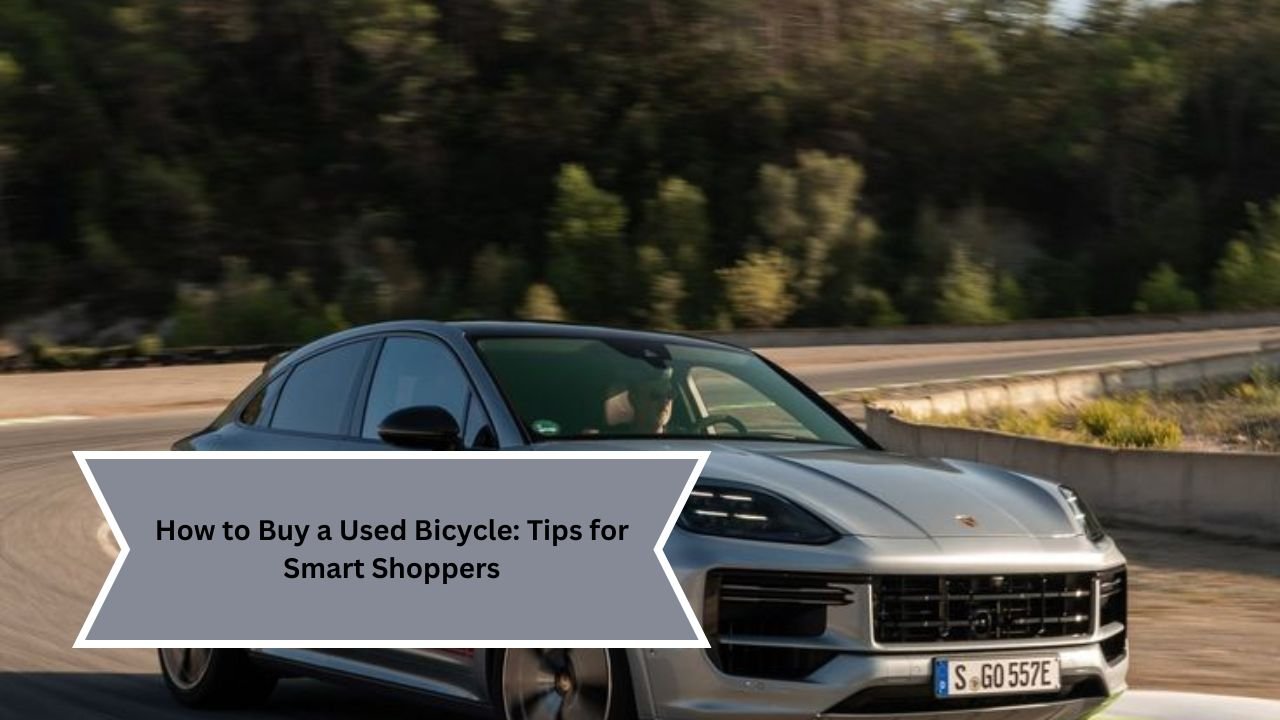Buying a used bicycle can be an excellent way to save money while still acquiring a reliable and enjoyable means of transportation or recreation. However, navigating the used bicycle market requires some knowledge and awareness to ensure you make a smart purchase. This guide will provide you with valuable tips to help you find the right bike for your needs, avoid common pitfalls, and maximize your investment.
1. Determine Your Needs
Before diving into the used bicycle market, take a moment to reflect on your needs and preferences. Consider how you intend to use the bike:
- Commuting: If you plan to use your bike for daily commuting, look for features like fenders, a rack for carrying cargo, and lights for safety.
- Recreation: For leisurely rides or fitness, you may prefer a lightweight road bike or a comfortable hybrid model.
- Off-Roading: If you’re into mountain biking, ensure the bike has appropriate suspension and tires for rough terrain.
Identifying your primary use will help narrow down your options and ensure you select a bicycle that suits your lifestyle.
2. Set a Budget
Establishing a budget is crucial when buying a used bicycle. Prices can vary widely depending on the bike’s brand, age, and condition. Consider how much you are willing to spend, keeping in mind additional costs such as accessories (like helmets, locks, and lights) and potential repairs. Setting a clear budget helps you stay focused and prevents impulse purchases.
3. Research Brands and Models
Not all bicycles are created equal. Some brands and models are known for their durability and performance, while others may not hold up as well over time. Do some research on reputable bicycle brands that match your intended use. Check online reviews, forums, and cycling communities to gather insights on various models. Understanding the market will empower you to make an informed decision and spot a good deal when you see one.
4. Inspect the Bicycle
When you find a used bicycle that interests you, it’s essential to conduct a thorough inspection. Here’s what to look for:
Frame Condition
Examine the frame for any cracks, dents, or signs of rust. A damaged frame can compromise the bike’s integrity and safety. Pay special attention to welds, as these can be weak points. If possible, lift the bike and feel how it balances; a well-made frame should feel sturdy and well-balanced.
Tires and Wheels
Check the tires for wear and tear. Look for uneven tread, cracks, or bulges. Tires that are excessively worn may need to be replaced soon, which can add to your costs. Spin the wheels to ensure they are true (not wobbling) and check the spokes for damage or looseness.
Brakes
Test the brakes to ensure they function properly. Squeeze the brake levers to check for responsiveness and listen for any unusual noises. Inspect the brake pads for wear; they should not be too thin or worn down.
Gears and Chain
Shift through all the gears to ensure smooth transitions. If the bike has a derailleur, check its alignment and condition. The chain should be clean and well-lubricated. A rusty or excessively worn chain may need replacing.
Components
Inspect other components, such as the handlebars, seat, and pedals. Make sure they are in good condition and feel comfortable for your riding style. Pay attention to any rattles or loose parts, as these can indicate larger issues.
5. Take a Test Ride
Never buy a used bicycle without taking it for a test ride. This is your opportunity to assess its comfort, handling, and overall fit. Ensure the bike is the right size for you; your feet should touch the ground when sitting on the saddle. During the test ride, pay attention to:
- Comfort: Is the seat comfortable? Do you feel supported while riding?
- Handling: Does the bike feel stable? Is it easy to maneuver?
- Performance: How do the brakes respond? Is shifting smooth?
A test ride will provide valuable insights into the bike’s suitability for your needs.
6. Ask Questions
When buying from a private seller or a shop, don’t hesitate to ask questions about the bike’s history. Inquire about:
- Previous ownership: How many owners has the bike had?
- Maintenance history: Has it been regularly serviced? Are there any repairs that have been made?
- Reason for selling: Why is the seller parting with the bike? This can sometimes reveal potential issues.
Gathering this information will help you gauge the bike’s condition and whether it’s worth your investment.
7. Negotiate the Price
Once you’ve completed your inspection and test ride, it’s time to discuss the price. If you notice any issues or if the bike requires repairs, use this information to negotiate a fair price. Don’t be afraid to make a reasonable offer based on the bike’s condition and market value. Remember, negotiation is a standard part of purchasing used goods, so approach it confidently.
8. Verify the Purchase
Before finalizing the purchase, ensure that you have all necessary documentation. If buying from a shop, request a receipt that includes the bike’s make, model, and serial number. If you’re purchasing from an individual, consider asking for a bill of sale to protect yourself in case of any disputes in the future.
9. Consider Accessories and Safety Gear
Once you’ve acquired your used bicycle, don’t forget about safety gear and accessories. Investing in a quality helmet, lights, and a lock is crucial for safe and enjoyable riding. If you plan to use the bike for commuting, consider adding a rack or panniers for carrying belongings.
10. Regular Maintenance
To extend the lifespan of your used bicycle, regular maintenance is key. Familiarize yourself with basic bike upkeep, such as cleaning the chain, checking tire pressure, and inspecting brakes. Consider taking your bike to a local shop for a tune-up after your initial purchase to ensure everything is in optimal condition.
Conclusion
Buying a used bicycle can be a rewarding experience if approached with careful consideration and knowledge. By determining your needs, setting a budget, researching brands, inspecting the bike, and taking it for a test ride, you can make an informed decision that aligns with your cycling goals. With the right precautions and a focus on quality, you’ll find a used bicycle that offers both value and enjoyment for years to come. Happy cycling!
| HOME | CLICK HERE |
| BUYING GUIDES | CLICK HERE |

